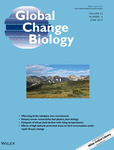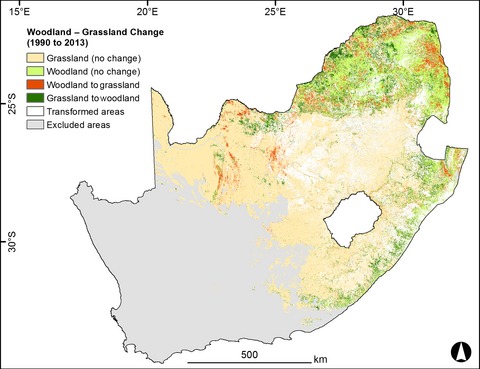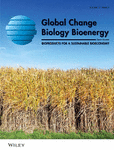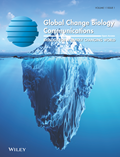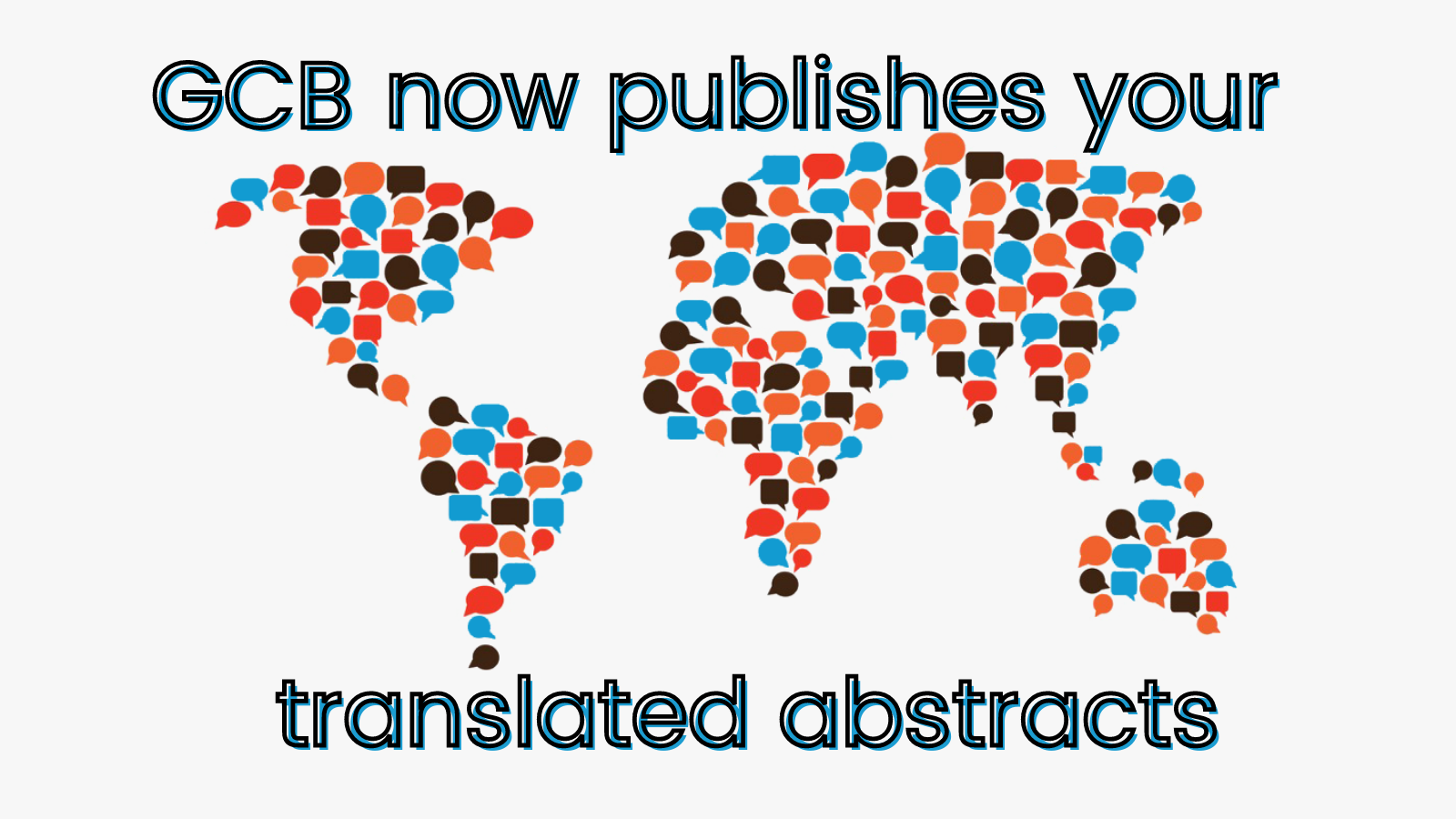Journal list menu
Export Citations
Download PDFs
Opinion
Lessons from two high CO2 worlds – future oceans and intensive aquaculture
- Pages: 2141-2148
- First Published: 20 October 2016
Acid rain recovery may help to mitigate the impacts of climate change on thermally sensitive fish in lakes across eastern North America
- Pages: 2149-2153
- First Published: 15 December 2016
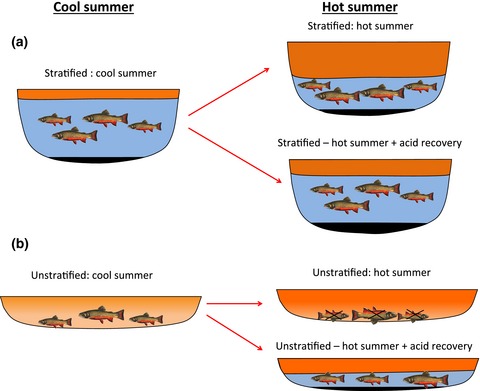
Declines in acid deposition have lead to recovery of trout in many mountain lake ecosystems across eastern North America. However, trout populations in these lakes are now under threat from increasing frequency and severity of hot summers. An unexpected by-product of recovery from acid rain may help mitigate against these climate change impacts. With acid recovery, dissolved organic matter is mobilized from soil, decreasing lake water clarity, which strengthens thermal stratification and enhances coldwater refuge for trout.
The case for increasing the statistical power of eddy covariance ecosystem studies: why, where and how?
- Pages: 2154-2165
- First Published: 01 November 2016
Research Review
Animal pee in the sea: consumer-mediated nutrient dynamics in the world's changing oceans
- Pages: 2166-2178
- First Published: 20 February 2017
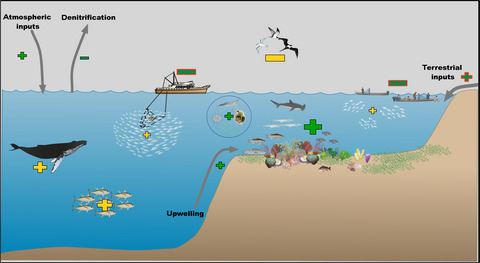
Humans have drastically altered the abundance of animals in marine ecosystems via exploitation. While the implications for these losses for community structure and ecosystem function are well recognized, the additional implications of these top-down changes for biogeochemical cycles via consumer-mediated nutrient dynamics are often overlooked in coastal marine systems. Here, we review research that underscores the importance of this bottom-up control at local, regional, and global scales in coastal marine ecosystems, and the implications of anthropogenic change to fundamentally alter these processes.
The importance of benthic–pelagic coupling for marine ecosystem functioning in a changing world
- Pages: 2179-2196
- First Published: 28 January 2017
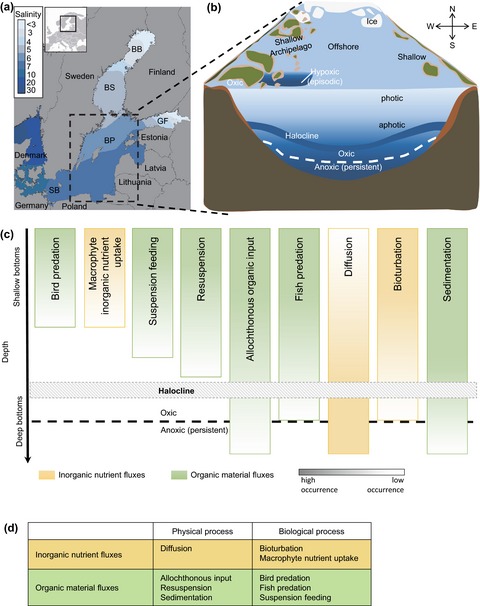
Benthic–pelagic coupling is prominent in aquatic ecosystems, but there are large gaps in our understanding of how inorganic nutrient and organic matter fluxes between benthic habitats and the water column respond to anthropogenic pressures. We use the Baltic Sea to illustrate the varied nature of physical and biological benthic–pelagic coupling processes and their potential sensitivity to climate change, nutrient loading, and fishing. Changing oxygen conditions will continue to have widespread effects on the processes that govern inorganic and organic matter exchange among habitats while climate change and nutrient load reductions may have large effects on organic matter sedimentation. We provide examples of how biological processes are sensitive to anthropogenic drivers, but the outcomes for ecosystem function are largely unknown. We emphasize how improved empirical and experimental understanding of benthic–pelagic coupling processes is necessary to inform models that can quantify the feedbacks among processes and ecosystem responses to a changing world.
Primary Research Articles
Restricted gene flow and local adaptation highlight the vulnerability of high-latitude reefs to rapid environmental change
- Pages: 2197-2205
- First Published: 28 January 2017
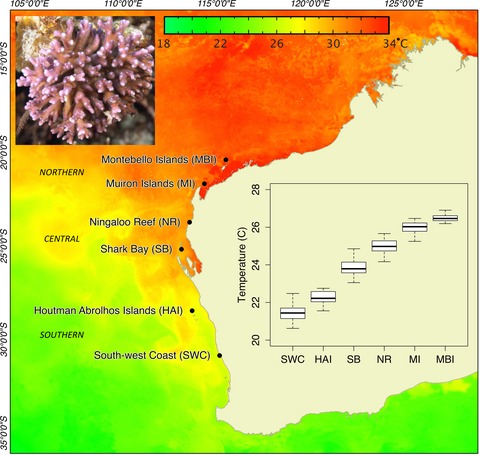
This study provides genomic evidence for both restricted gene flow and local adaptation in a widely distributed coral species, and highlights the potential vulnerability of leading-edge populations to rapid environmental change as they are locally adapted, reproductively isolated, and have reduced levels of genetic diversity.
Decadal shifts in autumn migration timing by Pacific Arctic beluga whales are related to delayed annual sea ice formation
- Pages: 2206-2217
- First Published: 21 December 2016
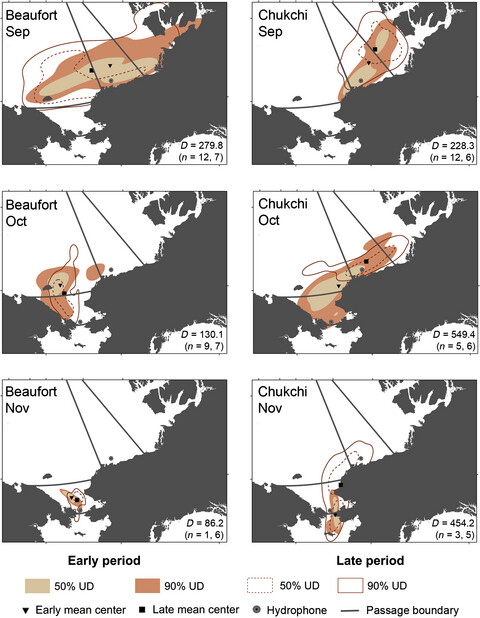
The consequences of rapid changes in Arctic sea ice have the potential to affect the migrations of a number of marine species that are temporally matched to seasonal sea ice cover. We quantified changes in autumn migration timing for sympatric ‘Chukchi’ and ‘Beaufort’ beluga whale populations relative to delayed regional sea ice freeze-up since the 1990s, using two independent data sources (satellite telemetry and passive acoustics). During the late tagging period, Chukchi belugas had significantly delayed autumn migrations (2 to >4 weeks) as regional sea ice freeze-up timing occurred later. In contrast, Beaufort belugas did not shift migration timing between periods, nor was migration timing related to freeze-up timing. This first phenological study examining beluga whale migrations within the context of their rapidly transforming Pacific Arctic ecosystem suggests flexible responses that may enable their persistence yet also complicate predictions of how belugas may fare in the future.
Where do they go? The effects of topography and habitat diversity on reducing climatic debt in birds
- Pages: 2218-2229
- First Published: 14 September 2016
Global warming may disproportionately affect larger adults in a predatory coral reef fish
- Pages: 2230-2240
- First Published: 03 November 2016
Effects of high latitude protected areas on bird communities under rapid climate change
- Pages: 2241-2249
- First Published: 29 September 2016
From endogenous to exogenous pattern formation: Invasive plant species changes the spatial distribution of a native ant
- Pages: 2250-2261
- First Published: 23 February 2017
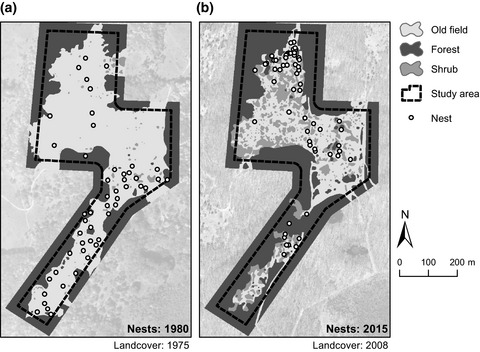
Invasive species are a threat to global biodiversity, but our understanding of how they impact native communities across space and time remains limited. We compared the spatial distribution of a population of native ant Formica obscuripes in SE Michigan between 1980 and 2015, during which the invasive shrub Elaeagnus umbellata changed the dominant landcover from open field to shrubland. Analyses of ant habitat preference and aggressivity suggest that this landcover change caused the nest pattern formation process to shift from endogenous (reproductive queen flights) that led to a uniform pattern, to both endogenous (nest budding) and exogenous (loss of preferred habitat), resulting in a significantly different clustered pattern. Results of a stage-structured model suggest that the ant population may be declining. Elaeagnus umbellata is a common invasive shrub, and similar impacts on native species might occur in its invasive range, or in areas with similar shrub invasions.
Additive impacts of experimental climate change increase risk to an ectotherm at the Arctic's edge
- Pages: 2262-2271
- First Published: 27 October 2016
Large extents of intensive land use limit community reorganization during climate warming
- Pages: 2272-2283
- First Published: 10 January 2017

This study investigates how bird and butterfly communities have changed during three decades of climate warming. We present the first evidence to show that community changes appear to be constrained by high-intensity land use. This has broad implications for managing landscapes to promote climate change adaptation.
Marine species in ambient low-oxygen regions subject to double jeopardy impacts of climate change
- Pages: 2284-2296
- First Published: 18 October 2016
Assessing long-term effects of multiple, potentially confounded drivers in ecosystems from species traits
- Pages: 2297-2307
- First Published: 22 November 2016
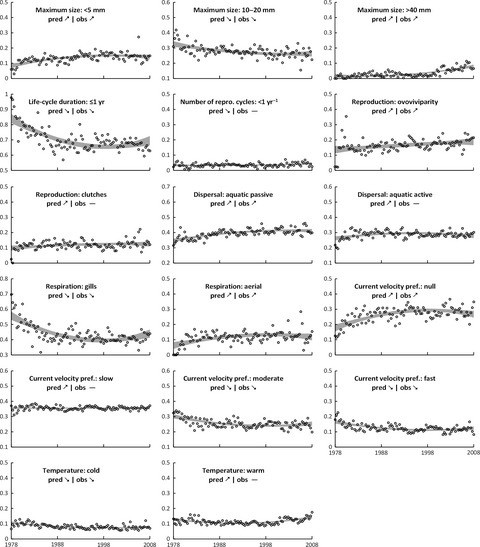
Using a priori predictions on the long-term variation of trait-based adaptations, we evaluated the ability of invertebrate traits to indicate the effects of warming, discharge reduction and water quality improvement over three decades in a large river (Middle Loire, France). More than 70% of these predictions were confirmed, supporting (i) a general climate-induced trend, involving adapted resistance and resilience strategies, and (ii) a partial confounding effect of water quality improvement, acting on trophic processes. By highlighting that improved water quality management can significantly help to reduce some adverse effects of climate change, our trait-based approach can have wider implications for investigating long-term changes driven by multiple, potentially confounded factors, as frequently encountered in the context of global change.
Climate change alters the reproductive phenology and investment of a lacustrine fish, the three-spine stickleback
- Pages: 2308-2320
- First Published: 30 November 2016
Do low oxygen environments facilitate marine invasions? Relative tolerance of native and invasive species to low oxygen conditions
- Pages: 2321-2330
- First Published: 17 February 2017

Marine artificial structures are proliferating worldwide and provide a haven for marine invasive species. Such structures disrupt local hydrodynamics, which can lead to the formation of oxygen-depleted microsites. We found that marinas reduce the water flow relative to piers, and that local oxygen levels can be as low as zero in these low flow conditions. We also found that sessile invasive animals can tolerate much lower levels of oxygen relative to native species. Integrating the field and laboratory data showed that up to 30% of available microhabitats within low flow environments are physiologically stressful for native species, while only 18% of the same habitat is physiologically stressful for invasive. Therefore, artificial structures may be creating niche opportunities for invasive species.
Climate-related changes of soil characteristics affect bacterial community composition and function of high altitude and latitude lakes
- Pages: 2331-2344
- First Published: 01 November 2016
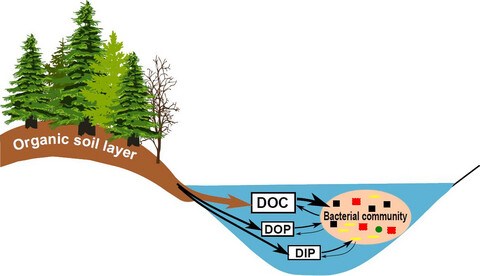
Climate change affects lake catchment characteristics including soil run-off composition. This work shows that the origin of soil source (i.e., from above or below the treeline) is a major factor structuring bacterial community composition of oligotrophic lakes at high altitude and latitude regions. Further, it shows that changes in soil-derived organic matter can alleviate bacterial phosphorus limitation and potentially have major effects on the carbon and phosphorus cycling in lakes.
Estuary–ocean connectivity: fast physics, slow biology
- Pages: 2345-2357
- First Published: 01 November 2016
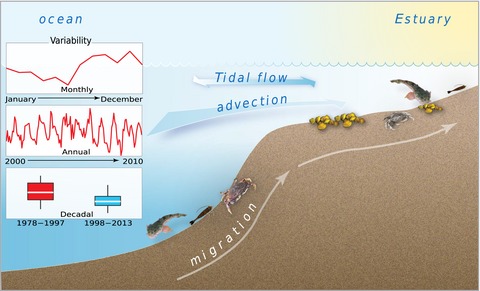
We explored climate-driven oceanic variability as a source of estuarine variability by comparing monthly temperature and chlorophyll-a inside San Francisco Bay with those in adjacent shelf waters. We identified clear signals of climate-mediated oceanic variability in this estuary that depended on the process of connectivity and the time scale of ocean variability. This result has important implications for managing nutrient inputs to estuaries and for assessing their responses to climate change.
Woodland expansion in South African grassy biomes based on satellite observations (1990–2013): general patterns and potential drivers
- Pages: 2358-2369
- First Published: 12 October 2016
Long-term forest resilience to climate change indicated by mortality, regeneration, and growth in semiarid southern Siberia
- Pages: 2370-2382
- First Published: 09 December 2016
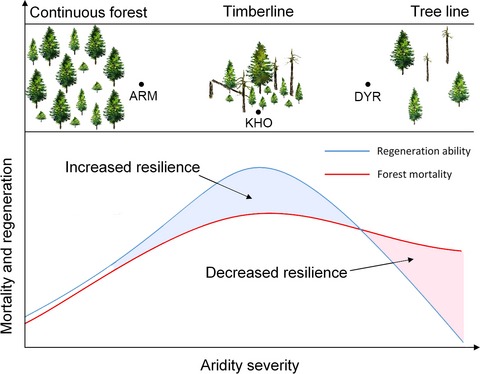
In this study, long-term forest resilience was defined as the capacity of forest recruitment to compensate for losses from mortality, to examine long-term resilience of semiarid forests against climate change in southern Siberia of Russia. With increased severity of local aridity, forests became vulnerable to drought stress, and regeneration first accelerated and then ceased. Smaller forest patches always have relatively weaker resilience under the same climatic conditions.
Warming and provenance limit tree recruitment across and beyond the elevation range of subalpine forest
- Pages: 2383-2395
- First Published: 15 December 2016
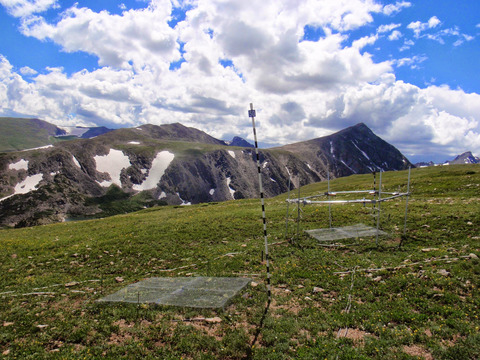
Climate warming is expected to promote upslope shifts in forests; however, common gardens subjected to climate manipulations indicate that warming and local genotype may constrain tree seedling recruitment above current treeline. Negative effects of warming in forest, treeline, and alpine sites were partly offset by watering, suggesting growing season moisture may limit establishment of future subalpine forests. Greater climate sensitivity of Engelmann spruce compared with limber pine portends potential future changes in the composition of high-elevation Rocky Mountain forests.
Plants, microorganisms, and soil temperatures contribute to a decrease in methane fluxes on a drained Arctic floodplain
- Pages: 2396-2412
- First Published: 07 November 2016
The positive net radiative greenhouse gas forcing of increasing methane emissions from a thawing boreal forest-wetland landscape
- Pages: 2413-2427
- First Published: 30 September 2016
A decade of boreal rich fen greenhouse gas fluxes in response to natural and experimental water table variability
- Pages: 2428-2440
- First Published: 05 January 2017
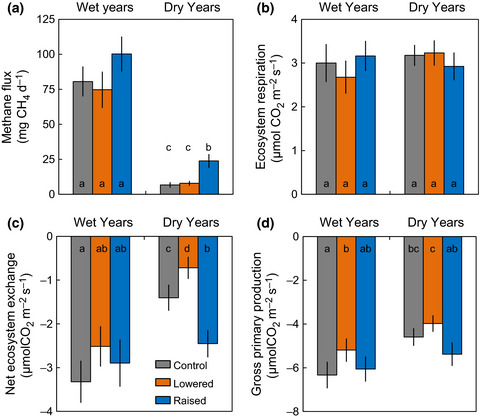
We carried out a water table manipulation experiment at an Alaskan rich fen and monitored greenhouse gas exchange over 9 years to determine both short-term and long-term controls on methane emissions, ecosystem respiration, net ecosystem exchange and gross primary production. We explored lag effects and found that experimentally exacerbated droughts caused reduced gross primary production in subsequent wet years. We show that distinct hydrology and biogeochemistry of rich fens may cause them to respond characteristically to climate change.
Different fates of deposited  and
and  in a temperate forest in northeast China: a 15N tracer study
in a temperate forest in northeast China: a 15N tracer study
- Pages: 2441-2449
- First Published: 18 October 2016
Effects of three global change drivers on terrestrial C:N:P stoichiometry: a global synthesis
- Pages: 2450-2463
- First Published: 17 November 2016
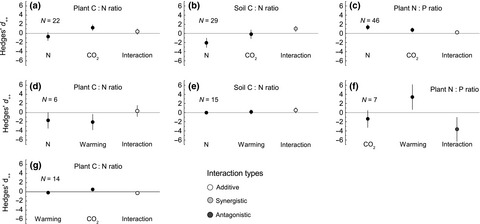
Individual effects of N addition and elevated CO2 on C:N:P stoichiometry are stronger than warming, and combined effects of driver pairs are generally weaker than individual effects of each of these drivers. Additive interactions are more common than synergistic or antagonistic interactions. C:N:P stoichiometries of soil and microbial biomass show high homeostasis under global change manipulations.
Hot spots of wheat yield decline with rising temperatures
- Pages: 2464-2472
- First Published: 10 November 2016
Effects of extreme drought on specific leaf area of grassland species: A meta-analysis of experimental studies in temperate and sub-Mediterranean systems
- Pages: 2473-2481
- First Published: 16 February 2017
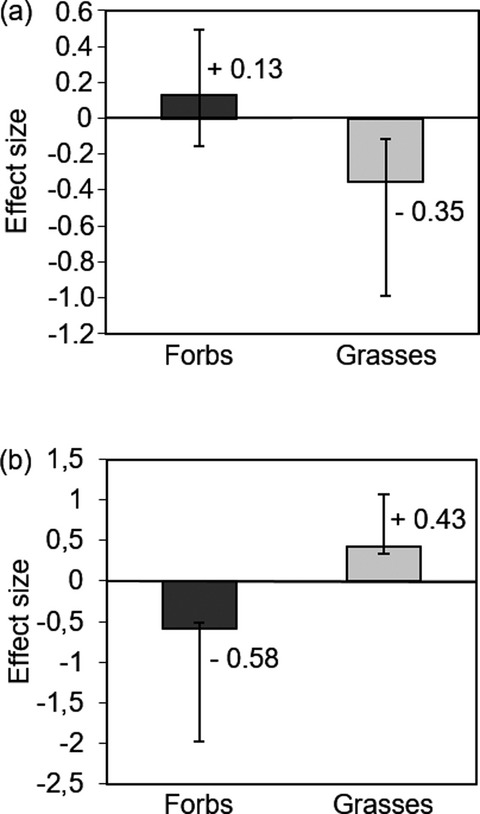
We conducted a meta-analysis on the effects of extreme drought on the intraspecific variation of the specific leaf area (SLA, a proxy of plant growth) using experimental drought-manipulation studies in five sites of natural grassland ecosystems of Europe. We found a significant decrease of SLA in grasses of the temperate systems in response to drought, while SLA of forbs showed no significant response. By contrast, in the sub-Mediterranean systems, grasses significantly increased and forbs decreased their SLA in the drought treatment. We provide mechanistic explanations for the obtained findings and conclude that differential reactions of functional groups have to be interpreted against the background of the group's evolutionary configuration that can differ between climatic zones.
Predicting vegetation type through physiological and environmental interactions with leaf traits: evergreen and deciduous forests in an earth system modeling framework
- Pages: 2482-2498
- First Published: 26 October 2016
Will phenotypic plasticity affecting flowering phenology keep pace with climate change?
- Pages: 2499-2508
- First Published: 14 October 2016
Global changes in soil stocks of carbon, nitrogen, phosphorus, and sulphur as influenced by long-term agricultural production
- Pages: 2509-2519
- First Published: 27 September 2016
A meta-analysis of fertilizer-induced soil NO and combined NO+N2O emissions
- Pages: 2520-2532
- First Published: 29 August 2016




